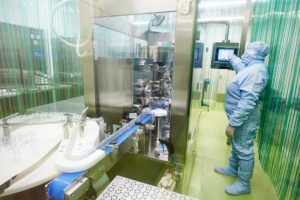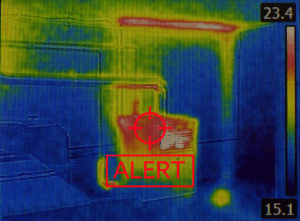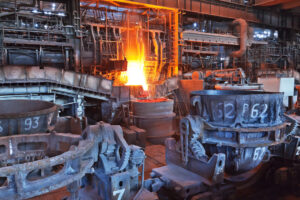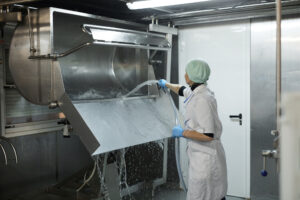Mining equipment is expensive. When it fails, it becomes even more expensive. A mining equipment failure can result in days or weeks of costly downtime. More importantly, faulty equipment can claim human lives.
Mining has always been a dangerous occupation. But recent technology can help mitigate a lot of the risks associated with this profession and improve mining companies’ revenue. Infrared video monitoring is a technology mine operators can implement to keep an eye on operations from afar.
Infrared Video Monitoring: The Diagnostic Solution for the Mining Industry
Most mines are like mini-cities: hundreds of corridors that mimic streets, their own power supply, complex infrastructure, and a lot of people who work and move there around the clock. There’s one significant difference, though: if one part of a city’s infrastructure collapses, the city keeps on running.
Sure, it may get overcrowded and unpleasant to live in for a while. But it’s still running.
In mines, that may not be the case, especially in autonomous mines. This is where infrared video monitoring comes into play: with little or no disruption to the mining site, the cameras can pinpoint problems before they happen.
With infrared cameras, you can:
- Identify risks and work to mitigate them
- Plan preventative maintenance work ahead, so it causes minimal disruption to the mining operations
- Spot overheating equipment before it becomes hazardous
Why Infrared Cameras Are the Best Choice for Mines and How Exactly They Can Prevent Equipment Failure
Mining sites are work environments with uniquely low visibility. While the human eye can get accustomed to dark surroundings, it can only do so up to a point. Miners can see well enough to do their jobs, but they can rarely spot tiny changes in heavy-duty cables or a pipe that’s about to burst.
Infrared cameras can see those changes, though. They can see in the dark better than any human.
Infrared cameras work by monitoring and displaying feeds of heat signatures, and they can help humans see even the slightest change in temperature. When an operator notices the image features red blots in areas where they shouldn’t exist, they know it’s time to raise the alarm.
Heat is expected in mining—large equipment, lots of components, many moving parts, and sometimes all in a constricted environment with little ventilation. But there’s a point where there’s TOO MUCH heat, especially when it indicates machine overheating, part-on-part friction, or malfunctioning cooling mechanisms, all of which can lead to equipment failure.
Thermal cameras can pick up these temperature changes before a failure occurs. An operator can request a maintenance call on the piece of equipment and identify the issue quickly—while it’s ideally a small issue. If left unnoticed, small heat-creating issues can lead to complete machine failure and even explosions.
Identifying and fixing small issues early can save you a lot of unplanned downtime, as well as protect your staff’s lives.
Some of the applications that our clients use the Opticom infrared cameras for are:
- The close monitoring of shafts, boilers, conveyors, motors, electrical systems, compressors, and other types of equipment.
- Cable monitoring to ensure continuous power supply to the mining equipment.
- Monitoring common heat sources like cables or belt rollers.
- Detecting personnel via body heat—a must-have in search and rescue operations.
- Analyzing transfer points and stockpiles.
Of course, infrared video monitoring in mines has countless applications. You can even use infrared or thermal cameras to help drivers gain better visibility in dark areas.
However, to leverage all these benefits you need cameras that can withstand the harsh environment in mines.
Choosing the Right Infrared Cameras for Mining Equipment Monitoring
Mines are humid, dusty, and dark. They also have a very high level of vibrations. It’s not the ideal environment for sensitive electronic equipment.
This is why you need rugged cameras for video monitoring in mines. Off-the-shelf cameras will need replacing every couple of weeks. Cameras that are specifically designed for mining operations can last for years.
But that’s not even the biggest issue—although the cost of constantly replacing your cameras can quickly add up. In mines, you need constant infrared monitoring for safety and security purposes.
If your cameras glitch every day, you won’t be able to catch equipment failures before they turn into a disaster. A rugged camera like the TC-8060IX-V can ensure the continuity of your video stream even in the harshest of environments.
Furthermore, we recommend our clients in the mining industry choose explosion-rated cameras. Mines are already prone to accidents; it’s important to make sure that the additional electronic equipment you bring in doesn’t come with its own risks.
Not sure which infrared cameras suit your mining operations best? We can help. At Opticom, we are more than video monitoring equipment sellers—we are our customers’ partners.
Before you make any purchase, we recommend you talk to our consultants; they specialize in high-risk environments and they can recommend the ideal cameras and mounts for any application.
Get in touch with the Opticom consultants and let’s secure your mining operation with the right infrared video monitoring system.







